The Clubhouse
Introduction
Text-to-speech Audio
The Clubhouse was built in 1897 and served as the first community gathering space in Jackson. Nearly every early community civic need began in this building. It once housed the school, church, post office, elections, trials, a mercantile, barbershop, bakery, and has served the community continuously. In 1908 a renovation was completed, which added a second story and the distinctive hipped roof still visible today. The old log walls were sheathed with clapboard, and the building became the origin point for the Town Square. The businesses that outgrew its walls were sited next door, or in the immediate area and the center of town was established.
Images
First Clubhouse c. 1897
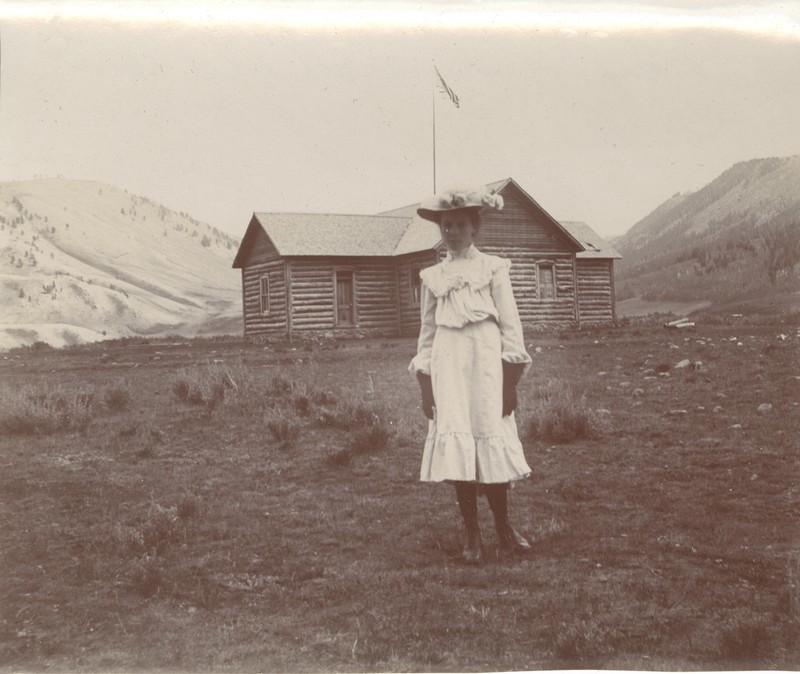
Clubhouse Renovation c. 1899
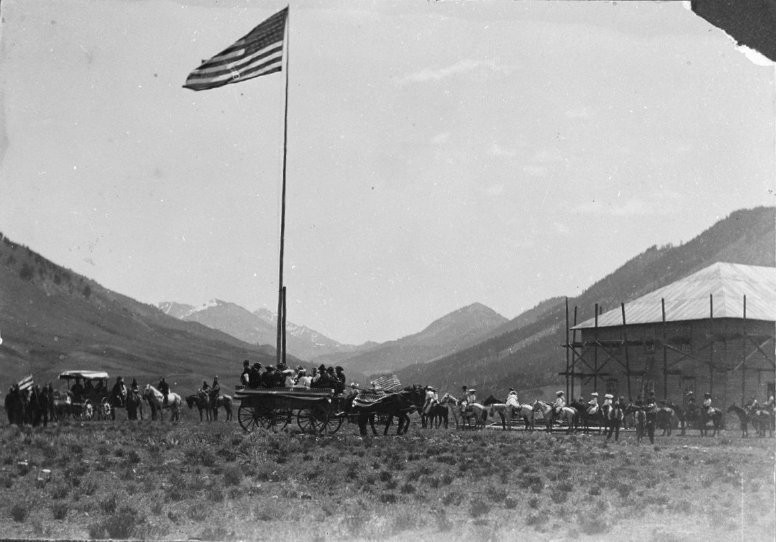
Clubhouse c. 1910s
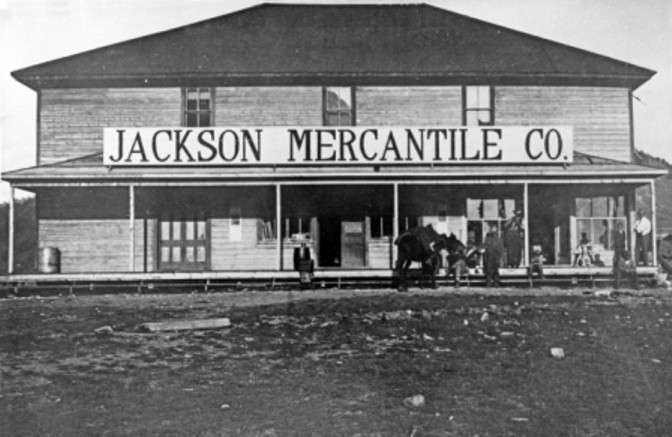
Completed Clubhouse c. 1910
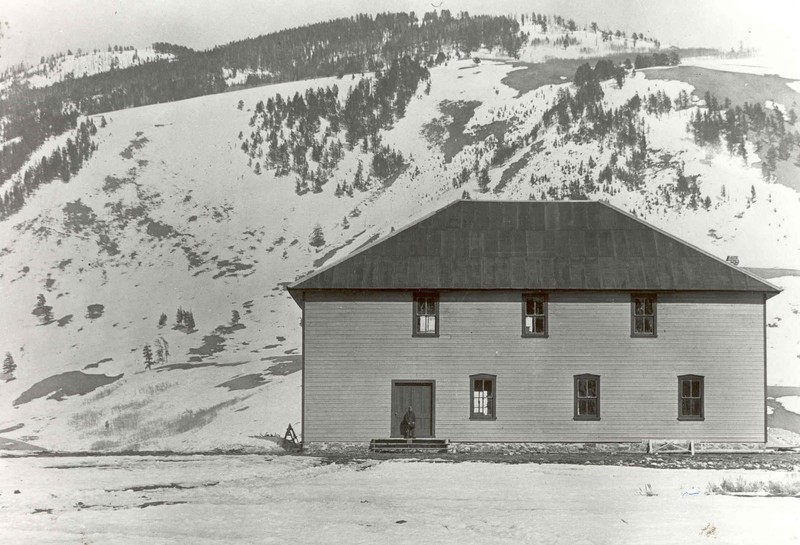
Clubhouse c. 1910s
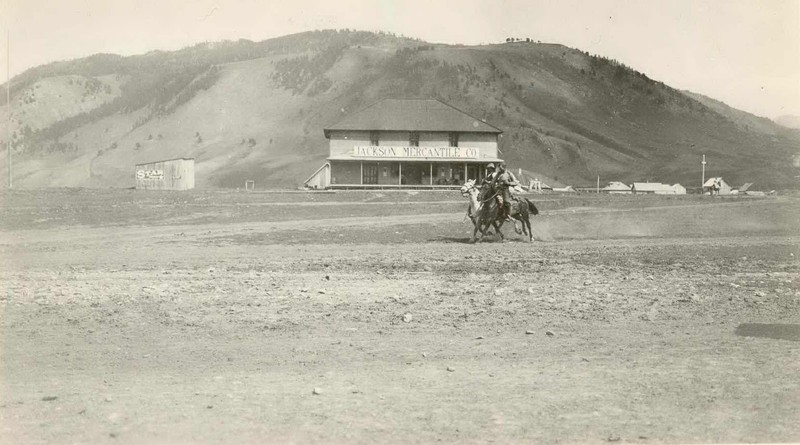
Backstory and Context
Text-to-speech Audio
In 1894 the first Post Office in Jackson Hole opened in its second location on the Simpson Ranch at the mouth of Cache Creek. It had been previously known as Marysvale for two years, named for Mary, the wife of the first postmaster Fred White. Maggie Simpson was the new postmaster and decided the name should represent the community, so she picked “Jackson” after Jackson Hole. The name stuck, and East Simpson Avenue in the town of Jackson now bisects the land once part of the Simpson Ranch, which is no longer extant.
In 1896, Maggie and her husband John formally founded the center of their newly named town. They donated five acres from the northwest corner of their homestead for the first community building. The locals formed a Gun Club to organize the planning and construction of the building. The Jackson Hole Gun Club also formed to oversee civic needs like organizing town meetings, a school, and indoor recreation space. The “Clubhouse” was finished in July 1897, and the first event was a Grand Ball, a celebration for the new building. Nearly all of the community’s early needs first began in this space including the Post Office, which had outgrown the Simpson Ranch.
Originally constructed from logs, the Clubhouse was a one-story building with a long rectangular open central space and two side rooms. The building looked something like a cross if viewed from above, with the cross section in the middle. One side room was a kitchen equipped with a stove and food prep space, and the other was a coat and storage room. During the all-night dances popular at the time, the coat room was converted into sleeping space for children. These dances were held overnight because it took some valley residents an entire day to make the trip into town and traveling home after dark, especially in winter, was dangerous. They’d serve dinner at midnight with coffee, and the entertainment lasted until daybreak.
The Jackson population more than doubled in the next 10 years, and the building was expanded to its present-day appearance. The log walls were sheathed in clapboard, and the smaller cross was enlarged to create one cohesive rectangular building. A second floor was added with a hipped roof, and the roofline is still distinctive on the Town Square today. The expanded building allowed for a mercantile, drugstore, barbershop, bakery and photography studio to make use of the building. It also hosted school and church congregations, and even served as a courthouse. During the 1910s, nearly all of these businesses would grow beyond the Clubhouse, and were built on lots next door or in the immediate area.
This haphazard growth oriented around the Clubhouse made an accidental square open area in the middle. After the Clubhouse was finished, Maggie Simpson purchased a forgotten 40-acre piece of land in 1900 with the intention of creating space for growth in this area. She sold 10 acres to a neighbor Grace Miller, who drew up lots and began selling them to businesses ready to move from the Clubhouse into their own buildings. Together the women platted the town of Jackson, which was incorporated in 1914. It was one remarked that one could once purchase the entire town for $100.
Sources
"The Clubhouse," If Walls Could Talk Series. Jackson Hole Historical Society & Museum. https://youtu.be/4Auof_lwELk?si=su1YX_6QEGrT_Si1
"Community Growth," First Families Online Exhibit. Jackson Hole Historical Society & Museum. https://jacksonholehistory.org/community-growth/
Decennial Population of Wyoming and Counties. U.S. Bureau of the Census. http://eadiv.state.wy.us/demog_data/cntycity_hist.htm
"Founding Females," Jackson Hole Historical Society & Museum. https://jacksonholehistory.org/founding-females/
“Post Offices in Jackson Hole,” Jackson Hole Historical Society & Museum Vertical File.
Jackson Hole Historical Society & Museum
Jackson Hole Historical Society & Museum
Jackson Hole Historical Society & Museum
Jackson Hole Historical Society & Museum
Jackson Hole Historical Society & Museum
